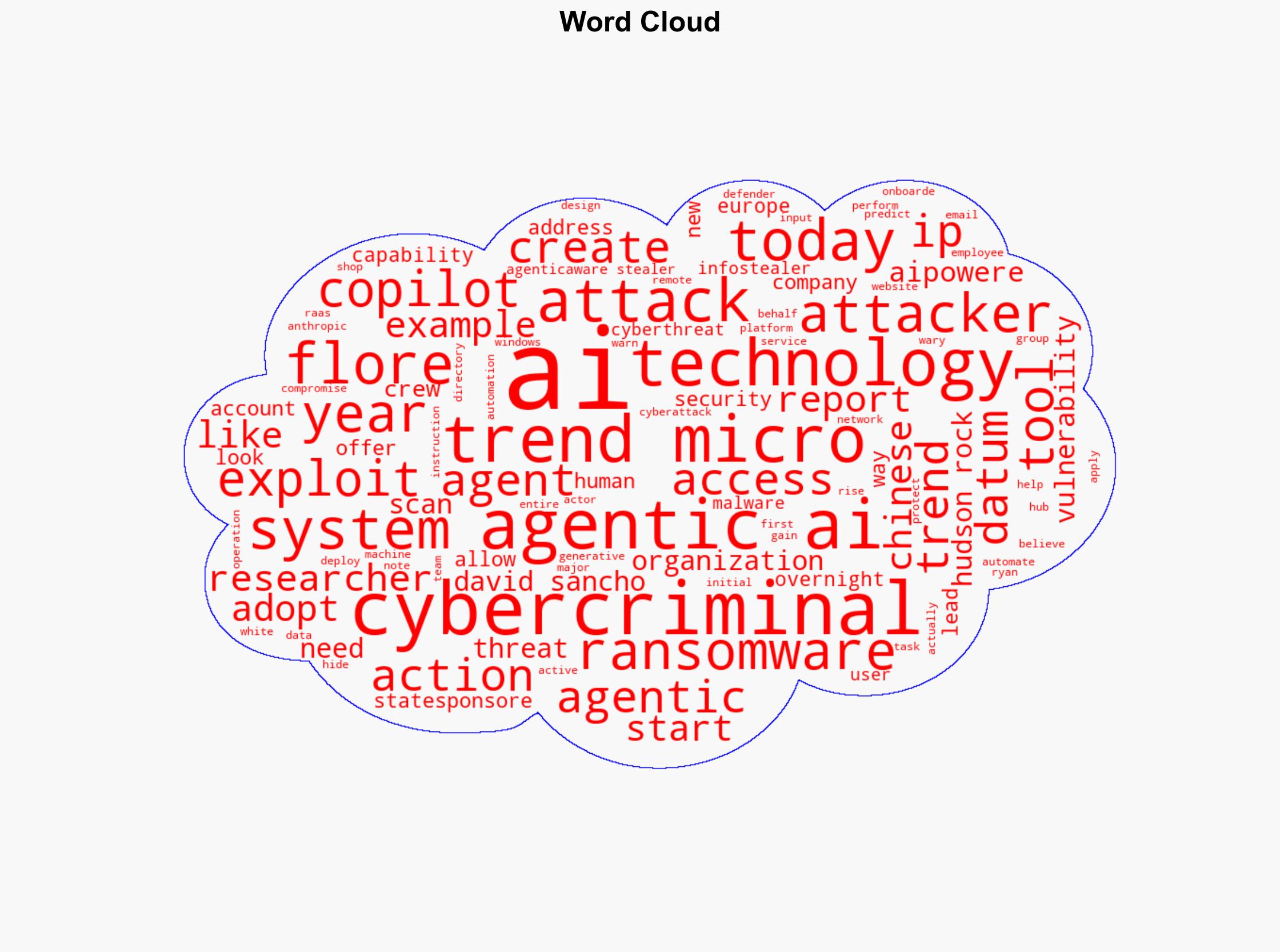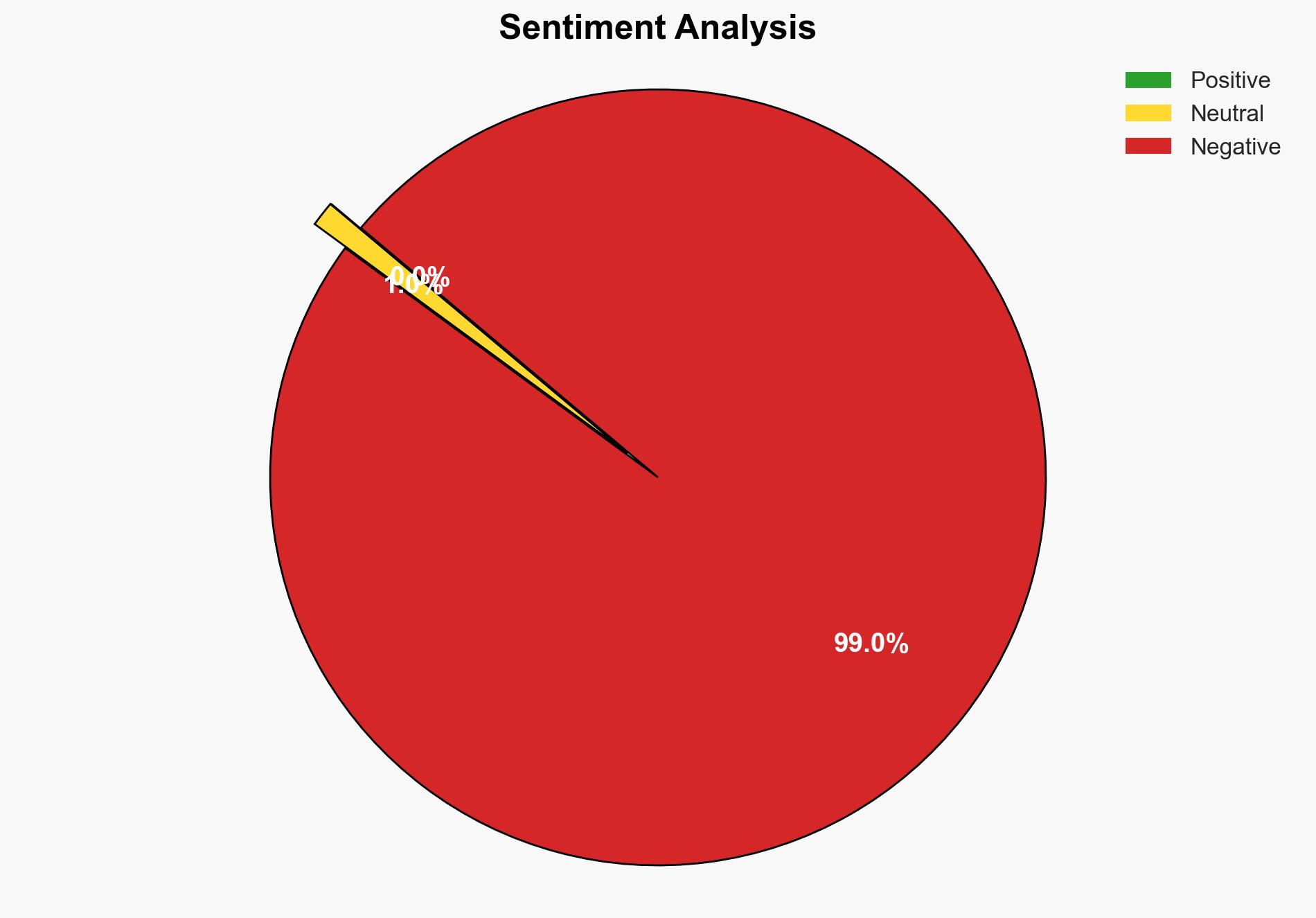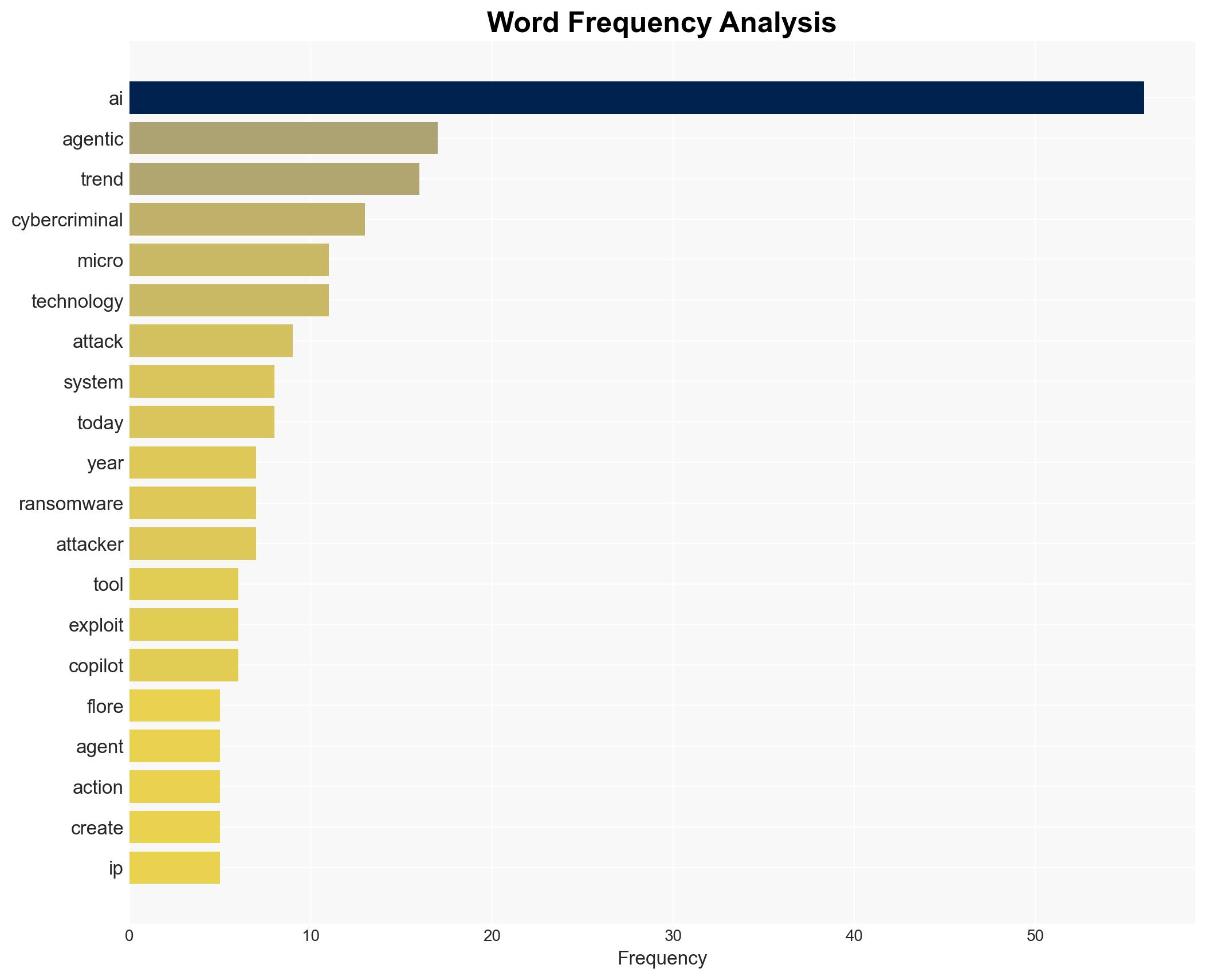Get ready for 2026 the year of AI-aided ransomware
Published on: 2025-11-25
AI-powered OSINT brief from verified open sources. Automated NLP signal extraction with human verification. See our Methodology and Why WorldWideWatchers.
Intelligence Report: AI-Aided Ransomware in 2026
1. BLUF (Bottom Line Up Front)
With a high confidence level, the most supported hypothesis is that AI-aided ransomware will become a significant threat by 2026, driven by both state-sponsored and independent cybercriminal groups. Strategic action should focus on enhancing AI-based defensive measures, improving international cooperation, and increasing public-private partnerships to mitigate risks.
2. Competing Hypotheses
Hypothesis 1: AI-aided ransomware will become a dominant tool for both state-sponsored and independent cybercriminals by 2026, significantly increasing the frequency and sophistication of cyberattacks.
Hypothesis 2: The adoption of AI-aided ransomware will be slower than anticipated due to technical challenges, regulatory interventions, and improved defensive measures, limiting its impact on the cyber threat landscape.
Hypothesis 1 is more likely due to current trends in AI development, the increasing sophistication of cybercriminals, and the potential for high rewards with minimal effort. However, Hypothesis 2 cannot be entirely dismissed given potential regulatory and technical challenges.
3. Key Assumptions and Red Flags
Assumptions: It is assumed that AI technology will continue to advance rapidly and become more accessible to cybercriminals. It is also assumed that current defensive measures will not evolve at the same pace.
Red Flags: Over-reliance on AI predictions without considering human oversight could lead to underestimating the threat. Additionally, the potential for misinformation or deception by cybercriminals about their capabilities should be considered.
4. Implications and Strategic Risks
The rise of AI-aided ransomware poses significant risks, including increased financial losses, disruption of critical infrastructure, and erosion of public trust in digital systems. Politically, state-sponsored attacks could escalate tensions between nations, leading to potential conflicts. Economically, businesses may face increased costs for cybersecurity measures and insurance.
5. Recommendations and Outlook
- Develop and deploy AI-based defensive tools to detect and mitigate AI-aided ransomware attacks.
- Enhance international cooperation to establish norms and regulations for AI use in cyber operations.
- Increase investment in cybersecurity training and awareness programs for businesses and individuals.
- Best-case scenario: Effective defensive measures and regulations limit the impact of AI-aided ransomware.
- Worst-case scenario: Widespread adoption of AI-aided ransomware leads to significant economic and political instability.
- Most-likely scenario: A gradual increase in AI-aided ransomware incidents, with varying degrees of impact depending on the effectiveness of defensive measures.
6. Key Individuals and Entities
Ryan Flore, Trend Micro Lead Data Technology Researcher; David Sancho, Senior Threat Researcher, Trend Micro Europe.
7. Thematic Tags
Cybersecurity, AI, Ransomware, Cybercrime, State-Sponsored Attacks
Structured Analytic Techniques Applied
- Adversarial Threat Simulation: Model and simulate actions of cyber adversaries to anticipate vulnerabilities and improve resilience.
- Indicators Development: Detect and monitor behavioral or technical anomalies across systems for early threat detection.
- Bayesian Scenario Modeling: Forecast futures under uncertainty via probabilistic logic.
- Network Influence Mapping: Map influence relationships to assess actor impact.
- Narrative Pattern Analysis: Deconstruct and track propaganda or influence narratives.
Explore more:
Cybersecurity Briefs ·
Daily Summary ·
Support us





